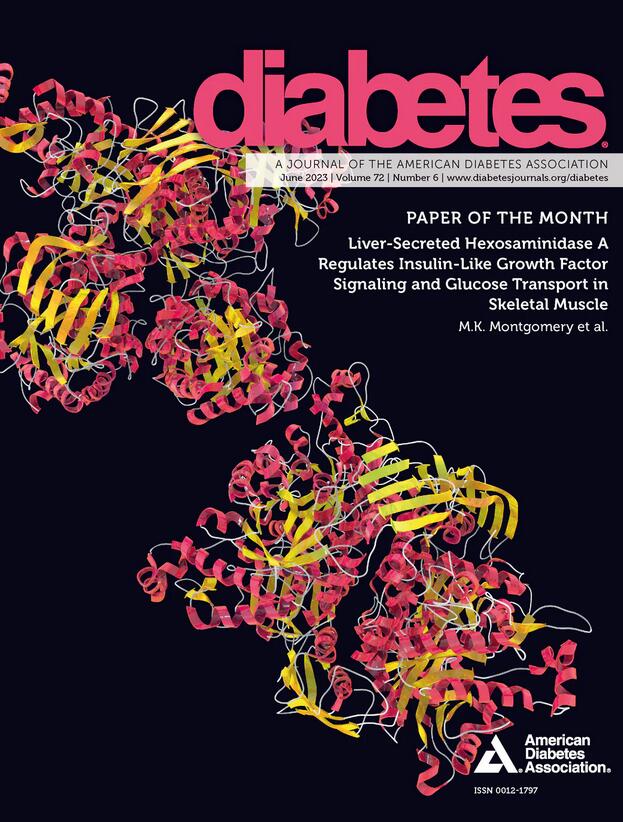1971-LB: Contributions of Fasting and Postprandial Glucose Increments to Overall Hyperglycemia in Pregnant Women with Type 1 Diabetes
IF 6.2
1区 医学
Q1 ENDOCRINOLOGY & METABOLISM
引用次数: 0
Abstract
Aims: To evaluate the relative contribution of fasting hyperglycemia (FHG) and postprandial hyperglycemia (PHG) to overall hyperglycemia across time in range (TIR) and glycated hemoglobin (HbA1c) categories in pregnant women with type 1 diabetes mellitus (T1DM). Materials and Methods: This observational study included 112 pregnant women with T1DM from the CARNATION study who wore continuous glucose monitoring (CGM) devices during pregnancy. The data from CGM were analyzed for TIR, AUC of PHG, AUC of FHG, FHG and PHG contribution rates. The levels of HbA1c (<6.0, 6.0-8.0, ≥8.0%) and TIR(<60, 60-78,≥78%) were categorized according to the guidelines, and the contribution of FHG and PHG to the overall hyperglycemia were compared. Results: A total of 295 CGM-HbA1c profiles were analyzed in this study. All women experienced a mean TIR of 75.6±19.0% and a mean HbA1c of 6.2±1.1% during pregnancy. The FHG contribution rates increased gradually with TIR decreasing [74.9(36.8, 100) vs. 69.1(13.4, 100) vs. 66.5 (10.0, 100), P<0.001] or with HbA1c increasing [57.8% (0, 100) vs. 72.7% (36.8, 100) vs. 80.7% (31.4, 100), P<0.001], whereas the contribution of PHG decreased progressively with diabetes worsening. Conclusions: FHG was the major contributor to hyperglycemia during pregnancy. Along with controlling the postprandial hyperglycemia, pregnant women with T1DM who did not reach the target of TIR or HbA1c may benefit more from the optimization of insulin regimens focusing on reducing the fasting hyperglycemia. Disclosure P. Ling: None. D. Yang: None. C. Wang: None. X. Zheng: None. S. Luo: None. X. Yang: None. H. Deng: None. W. Xu: None. J. Yan: None. J. Weng: None. Funding Science and Technology Planning Project of Guangzhou (grant/award number: 202102010154), Diabetes mellitus research fund program from Shanghai Medical and Health Development Foundation (grant/award number: DMRFP_II_14 from SHMHDF).1971-LB:1 型糖尿病孕妇空腹和餐后血糖升高对总体高血糖的影响
目的:评估 1 型糖尿病 (T1DM) 孕妇空腹高血糖 (FHG) 和餐后高血糖 (PHG) 在不同时间范围 (TIR) 和糖化血红蛋白 (HbA1c) 类别中对总体高血糖的相对贡献。材料与方法:这项观察性研究纳入了 CARNATION 研究中的 112 名 T1DM 孕妇,她们在怀孕期间佩戴了连续血糖监测(CGM)设备。对 CGM 数据进行了 TIR、PHG AUC、FHG AUC、FHG 和 PHG 贡献率分析。根据指南对 HbA1c(<6.0, 6.0-8.0, ≥8.0%)和 TIR(<60, 60-78, ≥78%)水平进行分类,并比较 FHG 和 PHG 对总体高血糖的贡献率。结果本研究共分析了 295 份 CGM-HbA1c 资料。所有妇女在怀孕期间的平均 TIR 为 75.6±19.0%,平均 HbA1c 为 6.2±1.1%。FHG的贡献率随着TIR的降低[74.9(36.8, 100) vs. 69.1(13.4, 100) vs. 66.5 (10.0, 100),P<0.001]或HbA1c的升高而逐渐增加[57.8% (0, 100) vs. 72.7% (36.8, 100) vs. 80.7% (31.4, 100),P<0.001],而PHG的贡献率则随着糖尿病的恶化而逐渐降低。结论FHG是导致孕期高血糖的主要因素。在控制餐后高血糖的同时,未达到TIR或HbA1c目标值的T1DM孕妇可从优化胰岛素方案中获益,重点是降低空腹高血糖。披露 P. Ling:无。D. Yang:无。C. Wang: 无:无。X. Zheng:无。S. Luo:无。X. Yang:无。H. Deng: None.W. Xu:无。J. Yan:无。翁杰:无。基金项目:广州市科技计划项目(资助/奖励号:202102010154),上海医药卫生发展基金会糖尿病研究基金项目(资助/奖励号:SHMHDF DMRFP_II_14)。
本文章由计算机程序翻译,如有差异,请以英文原文为准。
求助全文
约1分钟内获得全文
求助全文
来源期刊

Diabetes
医学-内分泌学与代谢
CiteScore
12.50
自引率
2.60%
发文量
1968
审稿时长
1 months
期刊介绍:
Diabetes is a scientific journal that publishes original research exploring the physiological and pathophysiological aspects of diabetes mellitus. We encourage submissions of manuscripts pertaining to laboratory, animal, or human research, covering a wide range of topics. Our primary focus is on investigative reports investigating various aspects such as the development and progression of diabetes, along with its associated complications. We also welcome studies delving into normal and pathological pancreatic islet function and intermediary metabolism, as well as exploring the mechanisms of drug and hormone action from a pharmacological perspective. Additionally, we encourage submissions that delve into the biochemical and molecular aspects of both normal and abnormal biological processes.
However, it is important to note that we do not publish studies relating to diabetes education or the application of accepted therapeutic and diagnostic approaches to patients with diabetes mellitus. Our aim is to provide a platform for research that contributes to advancing our understanding of the underlying mechanisms and processes of diabetes.
 求助内容:
求助内容: 应助结果提醒方式:
应助结果提醒方式:


